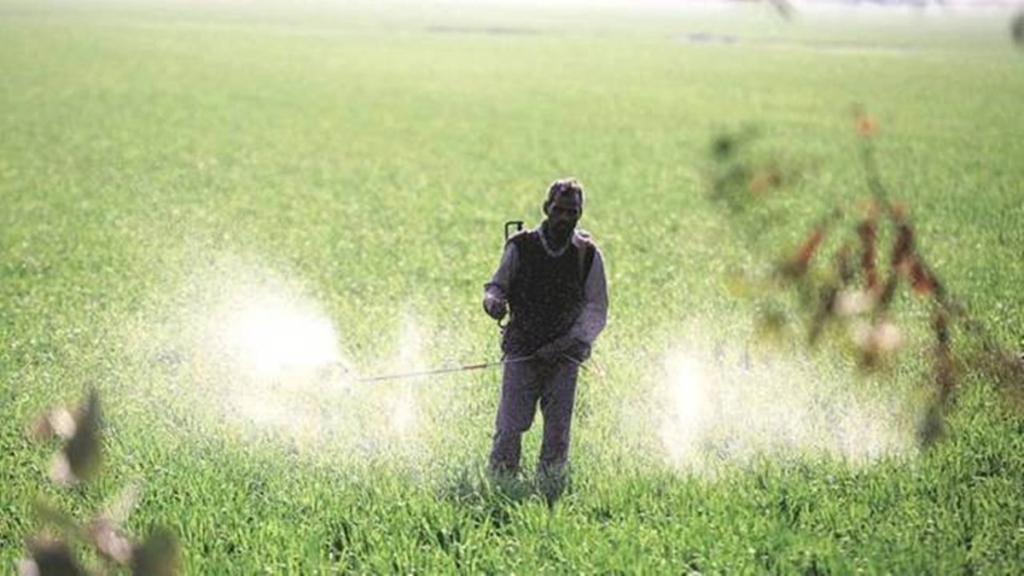The comment came close on the heels of fertiliser minister Mansukh Mandaviya’s statement last week that the subsidy on soil nutrients this year could exceed the BE by about Rs 46,000 crore
After a gap of five years, the Centre’s annual fertiliser subsidy will be contained below the budget estimate (BE) in the current financial year, a senior finance ministry official told FE, citing the decline in global prices of the relevant commodities, including natural gas and urea. The BE for FY24 is Rs 1.75 trillion.
The comment came close on the heels of fertiliser minister Mansukh Mandaviya’s statement last week that the subsidy on soil nutrients this year could exceed the BE by about Rs 46,000 crore. The minister noted that it would take about six months for the lower global prices to reflect in the actual subsidy expenses, because of inventories held by the fertiliser companies.
“We don’t think Rs 1.75 trillion will be exceeded,” the financial ministry official said.
Analysts are, however, of the opinion that since these are still early days, the actual subsidy burden on the exchequer will depend on the unfolding of the geopolitical situations through the year and supply chain dynamics. However, long-term gas and urea contracts that have already been signed at relatively lower rates might give the government some comfort.
The subsidy expenses are due to the policy of making available urea to farmers at a fixed rate and giving them a high level of immunity to fluctuations in the prices of phosphatic and potassic (P&K) fertilisers and their inputs.
In the case of P&K, which too are part of the nutrient based subsidy regime, the subsidy (rather than the price to farmer), is fixed since a 2010 policy change, but a sharp surge in prices might still force the government to raise the subsidy, as it did in FY23.
According to the finance ministry’s current assessment, the subsidy requirement will likely be around the BE if not lower, because even though global prices had fallen by more than 20% around January, the allocations in the budget on February 1 were not reduced to that extent. Prices have fallen further after the Budget, the ministry reckons.
Prices of gas (LNG), used for urea manufacturing, have almost halved to $12-13 per mmBtu now to about an average of $23-24 in the previous year. Imported urea prices have declined sharply to the current level of $330/tonne from $980/tonne in April, 2022.
India meets about 75-80% of the volume of consumption of urea from domestic production while the rest is imported from Oman, Egypt, the UAE, South African and Ukraine.
Similarly, global prices of DAP have dropped to $550/tonne currently from $925/tonne prevailed in April, 2022. The country imports about two thirds of its annual requirement of 10 million tonne of DAP. DAP prices are seen to fall further to around $ 300-350/tonne range prevailed two years back.
On May 19, the Cabinet approved subsidy of Rs 38,000 crore for P&K fertilisers for the kharif 2023 season (April-September) under the nutrient-based subsidy (NBS) mechanism, as against Rs 61,000 spent during last kharif season. Following the Cabinet decision, Mandaviya said that, including an estimated Rs 70,000 crore subsidy on urea, the government will spend Rs 1.08 trillion towards fertiliser subsidy in the summer season.
Some analysts were expecting even a sharper reduction in NBS rates for the kharif season than announced by the government. “It is possible the moderate reduction (in NBS rates) is aimed at allowing the fertilizer players to recoup some of the losses they might have incurred on DAP and MoP last year,” a fertiliser analyst, who did not wish to be identified, said.
The margin pressure on fertiliser firms in FY23 was evident when privately run Paradeep Phosphates while announcing Q4FY23 results said its profitability and margins were impacted owing to (low) subsidy rates under NBS for the quarter.
“In the second half of the current financial year, there may be a sizeable reduction in NBS subsidies, given the continued moderation in input prices,” the analyst said, adding that for FY24, the fertiliser subsidy could be around Rs 1.6 trillion.
Fertiliser subsidy in FY23 stood at an all-time high of Rs 2.53 trillion, owing to the spike in global commodity prices. The subsidy was last reined at the BE level (Rs 0.7 trillion) in FY19.

Source:financialexpress.com


